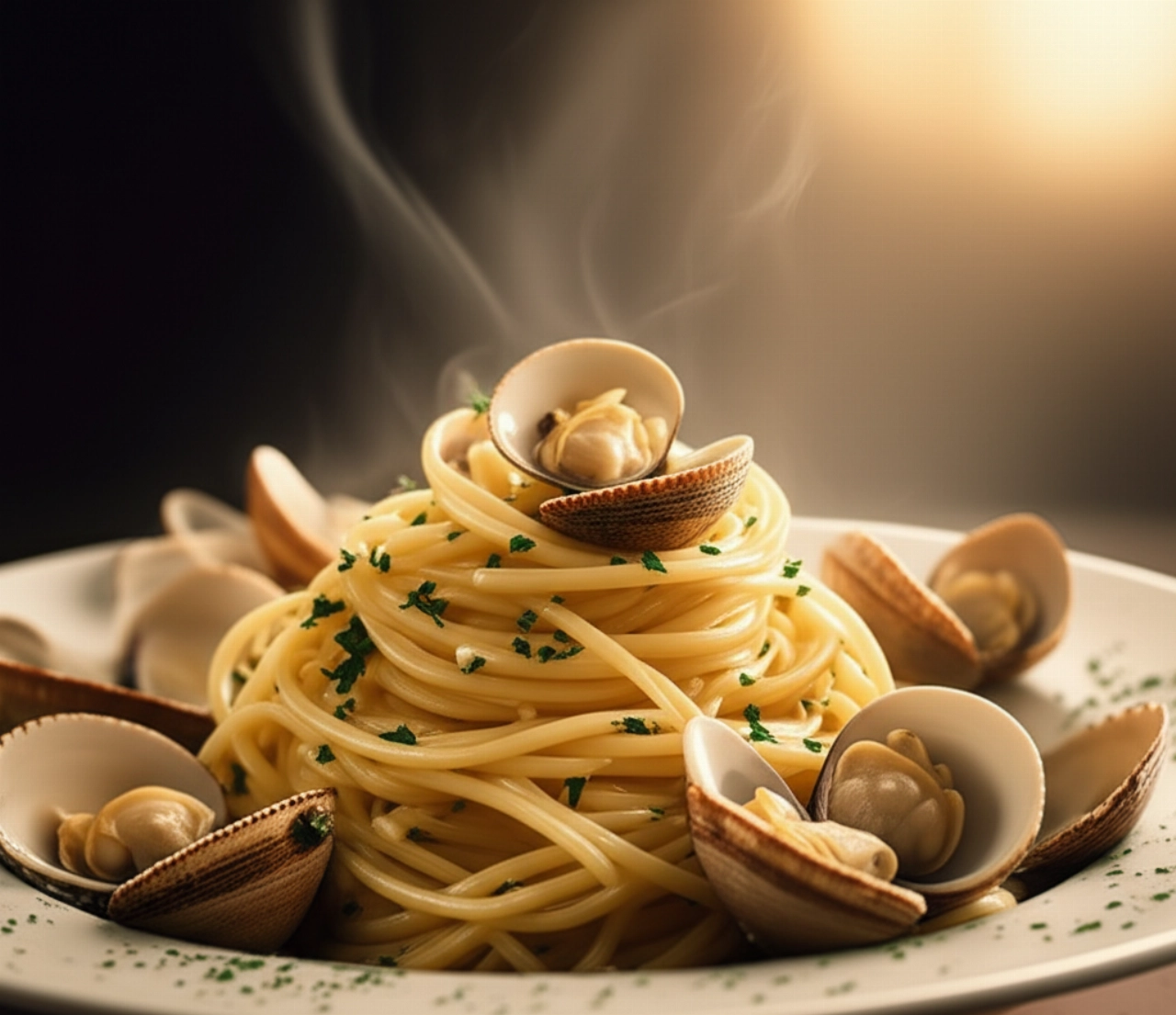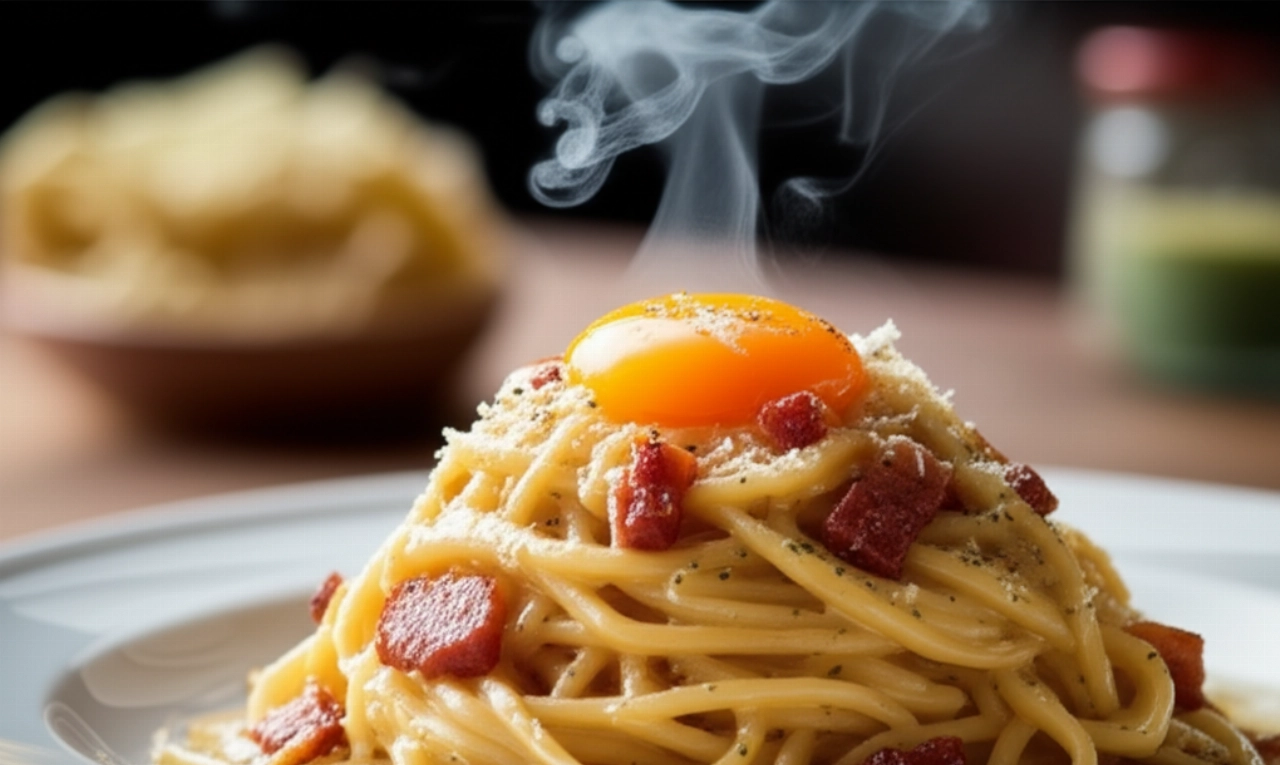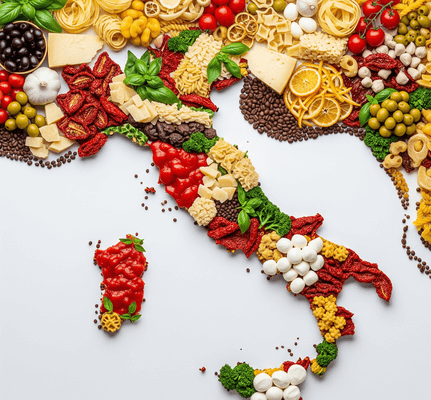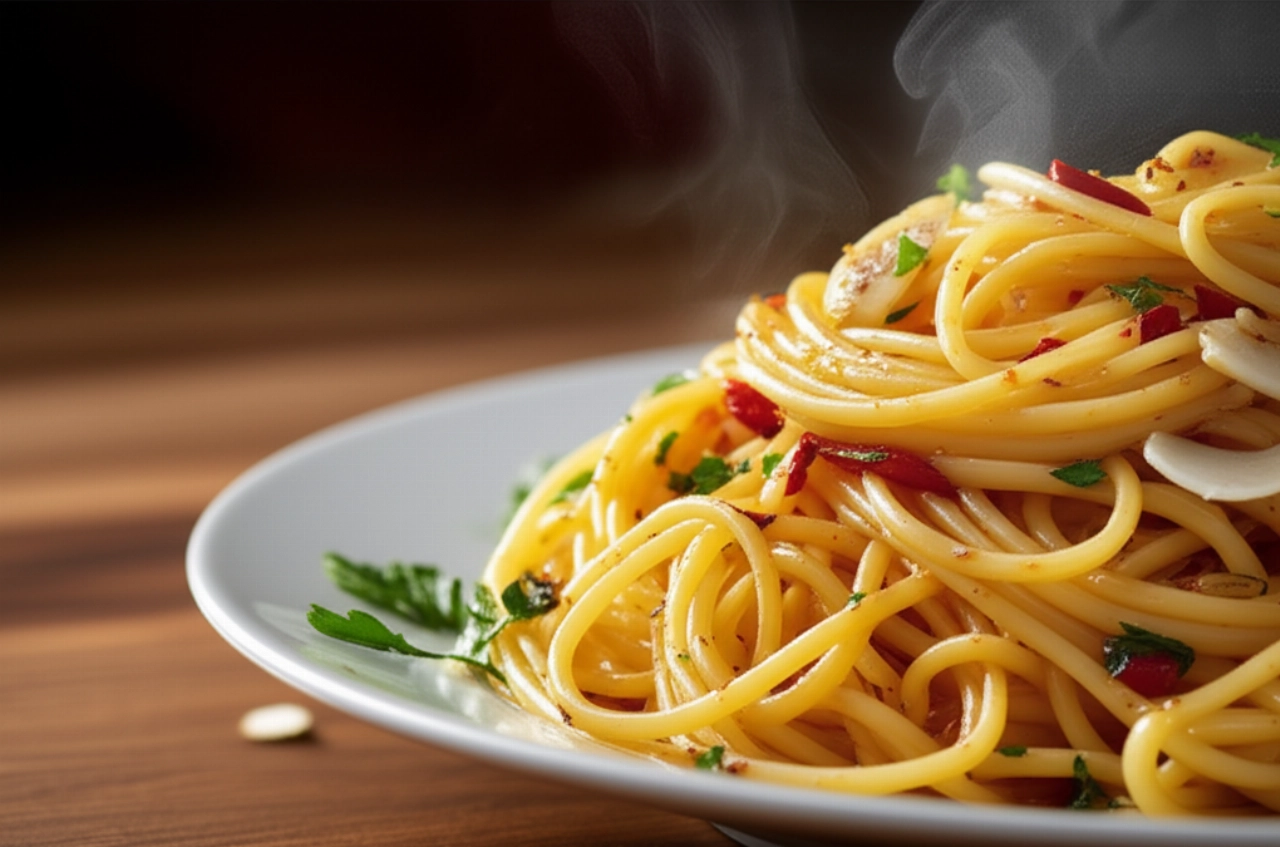Dreaming of bringing to the table a dish that encapsulates the most authentic soul of Abruzzo, a rich and comforting first course that tastes of celebration and home? Spaghetti alla Chitarra with Pallottine are much more than just a recipe: they are an embrace, a memory, a piece of Teramo culinary history that I will reveal to you today in every one of its secrets.
Perhaps you've tried making them, but found yourself with soggy spaghetti, pallottine that fall apart, or a sauce that doesn't bind and lacks that deep flavor you expect. Finding the true Teramo recipe, one that guarantees success and makes you feel like a real chef, can seem almost impossible.
Make yourself comfortable, because today I won't just give you a list of ingredients. I will guide you step by step, with the patience and experience of someone who holds these flavors in their heart, to prepare the perfect Spaghetti alla Chitarra with Pallottine, just like my grandmother used to make them. This isn't just a recipe, but a foolproof guide, full of tricks and tips, that will lead you straight to success. The result? A dish that will make anyone who tastes it say "Wow!" Success is guaranteed!

Smart Ingredients: The Choice That Makes the Difference
Every great dish starts with carefully chosen ingredients. Here, it's not just about quantity, but about quality and the "why" behind each choice. Trust me, this is where authentic flavor is built.
- For Spaghetti alla Chitarra (fresh pasta):
- Durum wheat semolina flour: Gives the pasta that rough and porous texture, perfect for "hugging" the sauce. Do not use 00 flour.
- Very fresh eggs (preferably organic): They are the binder and natural coloring. The fresher they are, the more elastic and flavorful the pasta will be.
- For the Pallottine (small meatballs):
- Mixed ground meat (beef and pork): The secret to softness and flavor. Beef provides structure, pork the right percentage of fat to make them juicy.
- Stale bread (or breadcrumbs): Soaked in milk and well squeezed, it makes the pallottine incredibly soft and light.
- Parmigiano Reggiano and/or Pecorino Romano: A mix for a perfect balance between savoriness and aroma.
- Egg: Binds the ingredients and contributes to softness.
- Fresh parsley, Garlic (optional), Salt, Pepper, Nutmeg: For aroma and flavor. Nutmeg is grandma's secret touch.
- For the Sauce:
- High-quality tomato passata: The base of the sauce. Choose a thick and sweet-tasting passata.
- Extra virgin olive oil: The main seasoning.
- Onion, Carrot, Celery (the soffritto): Finely chopped, they are the aromatic base that adds sweetness and depth.
- Fresh basil: Added at the end of cooking, it gives a summery aroma.
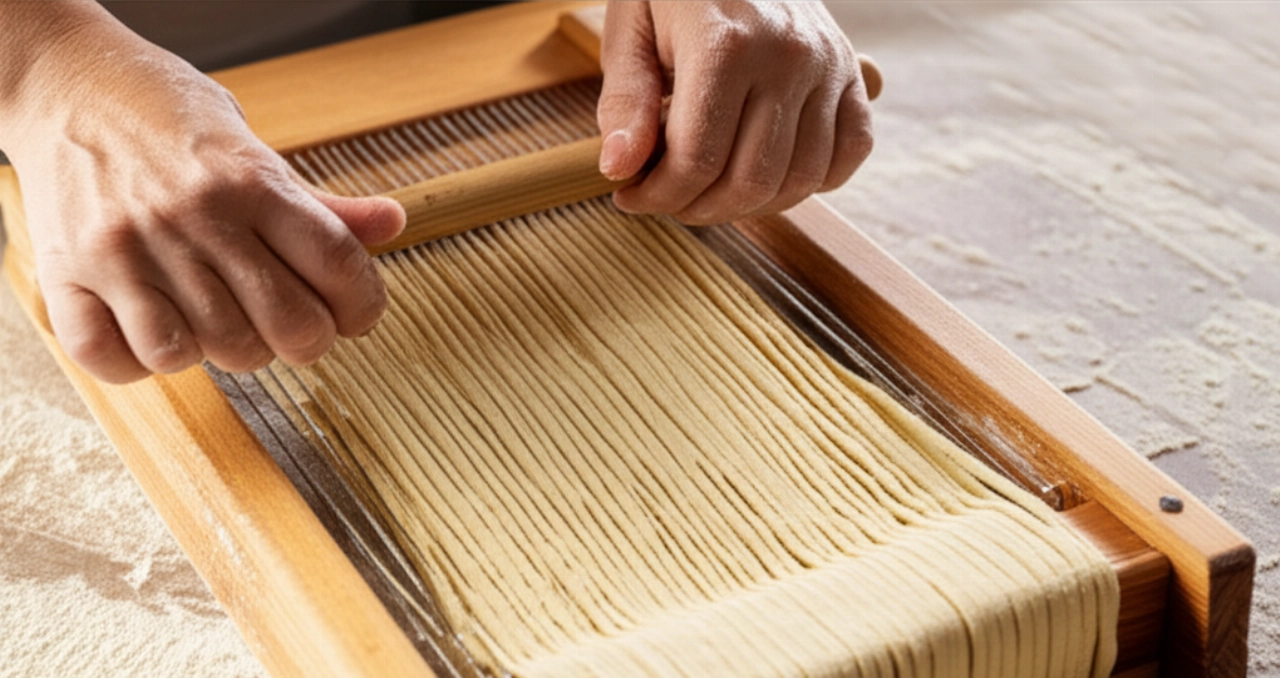
The 3 Mistakes to Avoid for Perfect Spaghetti and Pallottine
Cooking is also about learning from mistakes. I'll reveal the most common pitfalls to ensure guaranteed success.
- Pasta dough too soft or too hard: The ideal consistency is firm but elastic, like an earlobe. Wrong dough compromises processing and cooking.
- Overworking the pallottine: This makes the meatballs hard and compact. The mixture should be gently combined, just enough to bring the ingredients together.
- Rushed sauce cooking: The sauce is the soul of the dish and needs time. Let it simmer gently for at least an hour, preferably two, for a deep and enveloping flavor.
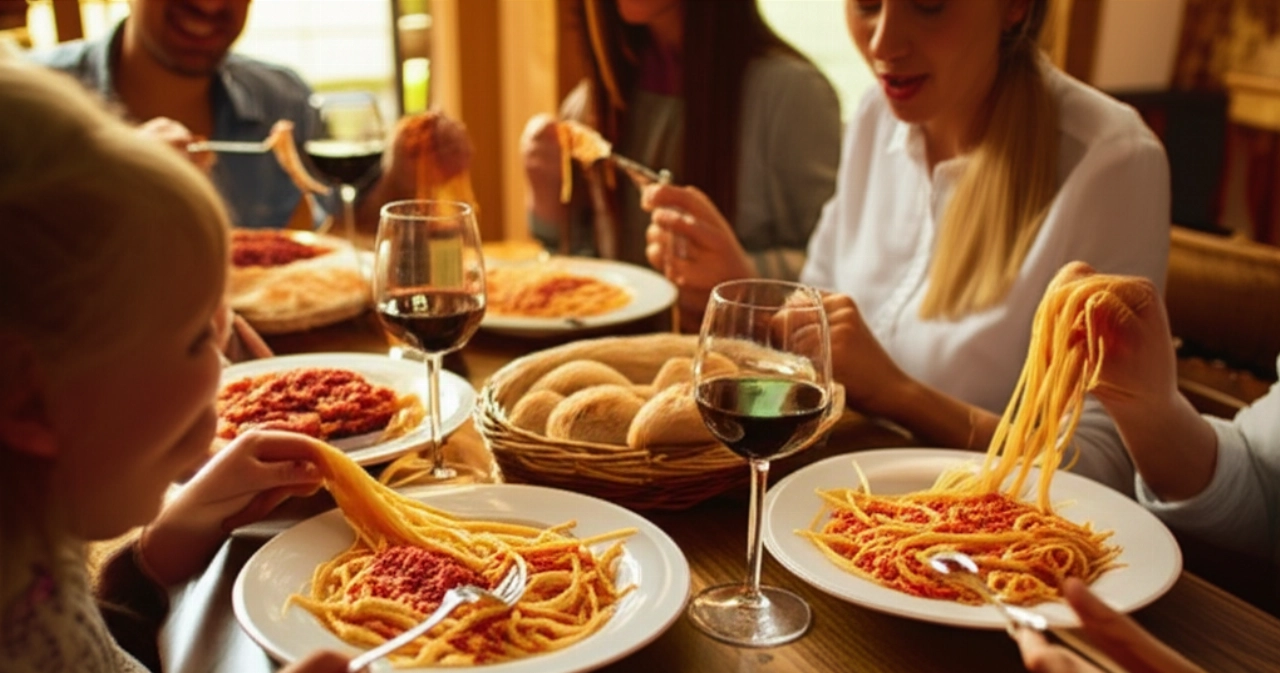
Grandma's Secret: A Touch of Teramo Magic
My grandmother, with her wise hands, taught me that cooking is made of small gestures and big secrets. For Spaghetti alla Chitarra with Pallottine, her advice was always the same: "Remember, grandchild, the sauce must 'sing' and the pallottine must be 'a whisper'."
Her trick for the pallottine was always to add a pinch, just a pinch, of freshly grated nutmeg to the mixture. Don't overdo it! That small aromatic touch enhances the flavor of the meat and makes them even more inviting, with an aroma that envelops you and immediately brings you home. It's a detail few know, but it makes a huge difference in the final taste.
And for the pasta? "Don't rush with the chitarra," she would say. "Pass the sheet slowly, with determination but without tearing. Each strand must be born perfect, because it will carry the sauce to your palate." Patience is key, both for the pasta and for the sauce.
Let's Prepare Spaghetti alla Chitarra with Pallottine Together: The Step-by-Step Guide
Phase 1: Spaghetti alla Chitarra (Fresh Pasta)
Ingredients for the pasta:
- 400 g durum wheat semolina flour
- 4 very fresh medium eggs (approx. 200 g)
- A pinch of salt (optional)
Necessary tools:
- Pastry board or large work surface
- Long rolling pin
- The "chitarra" (the traditional Abruzzese tool)
Method:
- Prepare the dough: On the pastry board, form a well with the semolina. Break the eggs into the center and add a pinch of salt. Begin to beat the eggs, gradually incorporating the semolina.
- Knead with energy: Work the dough with your hands for 10-15 minutes, until you obtain a smooth, firm, and elastic ball.
- Let it rest: Wrap the dough ball in plastic wrap and let it rest at room temperature for at least 30 minutes. This will relax the dough.
- Roll out the sheet: Lightly flour the pastry board. Roll out the dough with a rolling pin, obtaining a thin rectangular sheet (about 2-3 mm).
- Cut with the chitarra: Place the dough sheet on the tightly strung "chitarra". With the rolling pin, press firmly on the sheet to cut the spaghetti.
- Dry the spaghetti: Gather the spaghetti and place them on a tray dusted with semolina. Let them dry for at least 30-60 minutes to prevent them from sticking.
Phase 2: The Pallottine
Ingredients for the pallottine:
- 300 g mixed ground meat (beef and pork)
- 50 g stale bread (or breadcrumbs)
- 50 ml milk (or water)
- 50 g grated Parmigiano Reggiano
- 20 g grated Pecorino Romano
- 1 medium egg
- 1 tablespoon finely chopped fresh parsley
- 1 very finely minced garlic clove (optional)
- A pinch of nutmeg
- Salt and freshly ground black pepper to taste
- Extra virgin olive oil for browning
Method:
- Prepare the bread: Soften the bread in milk, then squeeze it very well.
- Combine the ingredients: In a bowl, combine the ground meat, squeezed bread, cheeses, egg, parsley, garlic (if using), nutmeg, salt, and pepper.
- Work the mixture: Gently combine with your hands. Work as little as possible to keep the pallottine soft.
- Form the pallottine: Take small portions (about 1 cm in diameter) and form tiny balls with slightly moistened hands.
- Brown the pallottine: In a pan with a drizzle of oil, brown them over medium-high heat until golden on all sides. Set them aside.
Phase 3: The Sauce
Ingredients for the sauce:
- 700 ml high-quality tomato passata
- 1 small onion
- 1 small carrot
- 1 small celery stalk
- Extra virgin olive oil to taste
- Salt to taste
- A few fresh basil leaves
Method:
- Prepare the soffritto: In a pot, heat the oil. Add the finely chopped onion, carrot, and celery. Let them sauté gently over low heat for 10-15 minutes, until soft.
- Add the passata: Pour in the tomato passata and a pinch of salt. Bring to a boil, then reduce the heat to minimum, cover, and let it simmer slowly for at least 1 hour (preferably 1 and a half hours).
- Add the pallottine: During the last 20-30 minutes of the sauce's cooking time, add the browned pallottine.
- Flavor with basil: At the end of cooking, turn off the heat and add a few fresh basil leaves.
Phase 4: Cooking and Finishing
- Cook the spaghetti: Bring a large pot of salted water to a boil. Add the spaghetti and cook for a few minutes, until al dente.
- Perfect finishing: Drain the spaghetti directly into the sauce with the pallottine. Toss the pasta in the sauce over high heat for one minute, mixing well. If necessary, add a tablespoon of cooking water for a velvety creaminess.
- Serve immediately: Plate the Spaghetti alla Chitarra with Pallottine hot, garnishing with Parmigiano or Pecorino and basil.
Tips and Frequently Asked Questions about Spaghetti alla Chitarra
Here are some of the questions I get asked most often. I hope they are helpful!
- Can I use only beef for the pallottine?
- Certainly, but choose a cut that's not too lean to prevent them from being dry. The beef-pork mix is preferable for softness and flavor.
- Can I prepare the pasta in advance?
- Yes, after cutting them, let them dry well on a floured tray for at least an hour. You can store them in the refrigerator (1-2 days) or freeze them (cook from frozen).
- How can I prevent the pallottine from falling apart?
- Do not overwork the mixture and squeeze the soaked bread well. Initial browning helps maintain their shape.
- Can I freeze the sauce with the pallottine?
- Absolutely! Let it cool, then divide it into portions and freeze. It keeps for 2-3 months. Thaw in the refrigerator or by gently reheating.
- I don't have a chitarra, can I make spaghetti another way?
- Certainly! You can roll out the dough thinly, roll it up, and cut it into strips with a sharp knife (like tagliatelle). Or use the tagliatelle attachment of a pasta machine.
There you have it! Now you no longer have just a recipe, but all the secrets to bring to the table a dish that tastes of home, tradition, and love. A true masterpiece of Abruzzese cuisine that will make you look great!
Don't be afraid to experiment. Cooking is a gesture of creativity and generosity. But start from this solid base and you'll see that applause won't be lacking. Every forkful will be a journey into the heart of Abruzzo, an explosion of authentic flavors that will make you feel like a true "guardian" of tradition.
Have you tried our Spaghetti alla Chitarra with Pallottine recipe? We're curious to know how it went! Leave a comment below, tell us about your experience, or share a photo on Instagram by tagging @CercaRicette.it. If you loved this recipe, you can't miss our guide on how to make fresh pasta at home to perfect your technique, or our recipe for homemade tomato sauce for an even more authentic and unforgettable experience!
